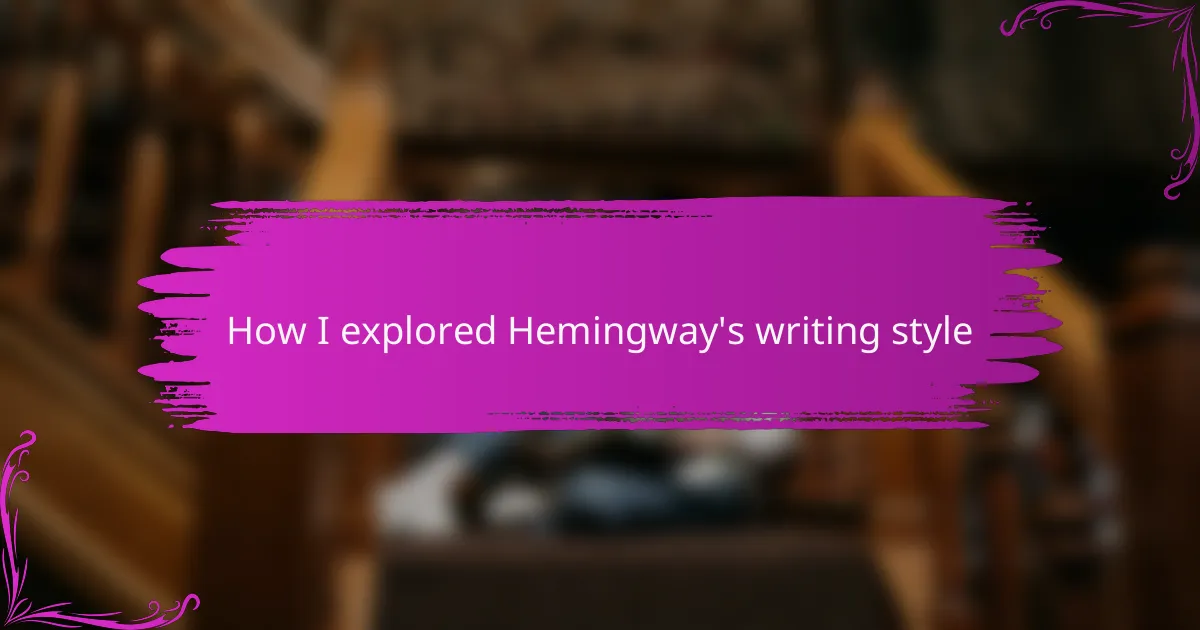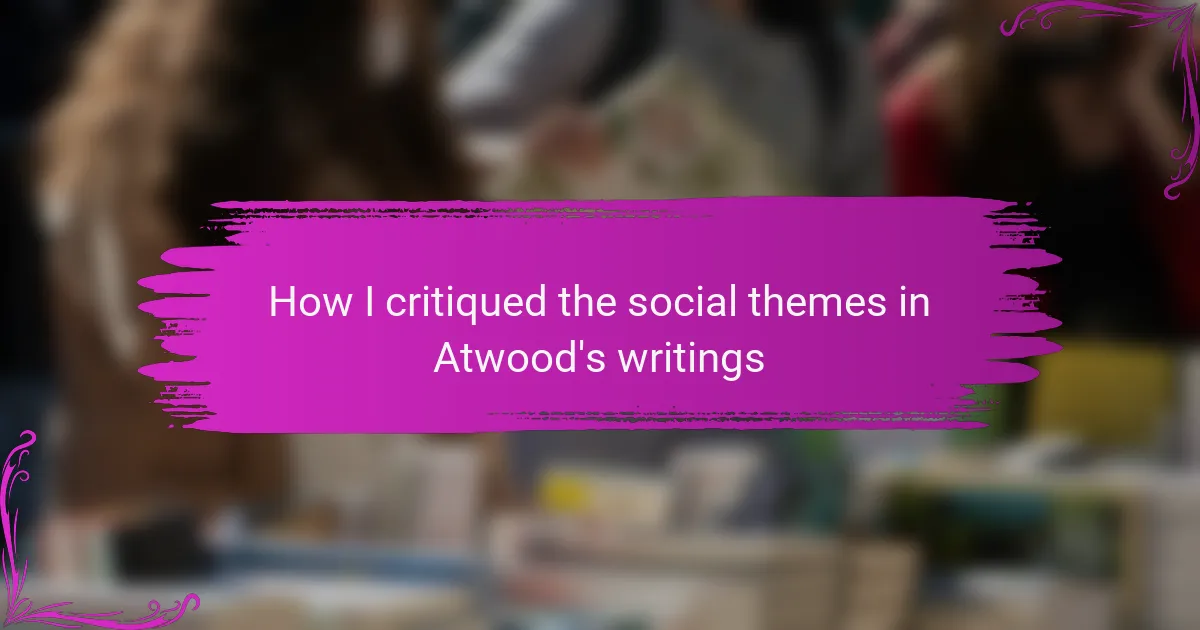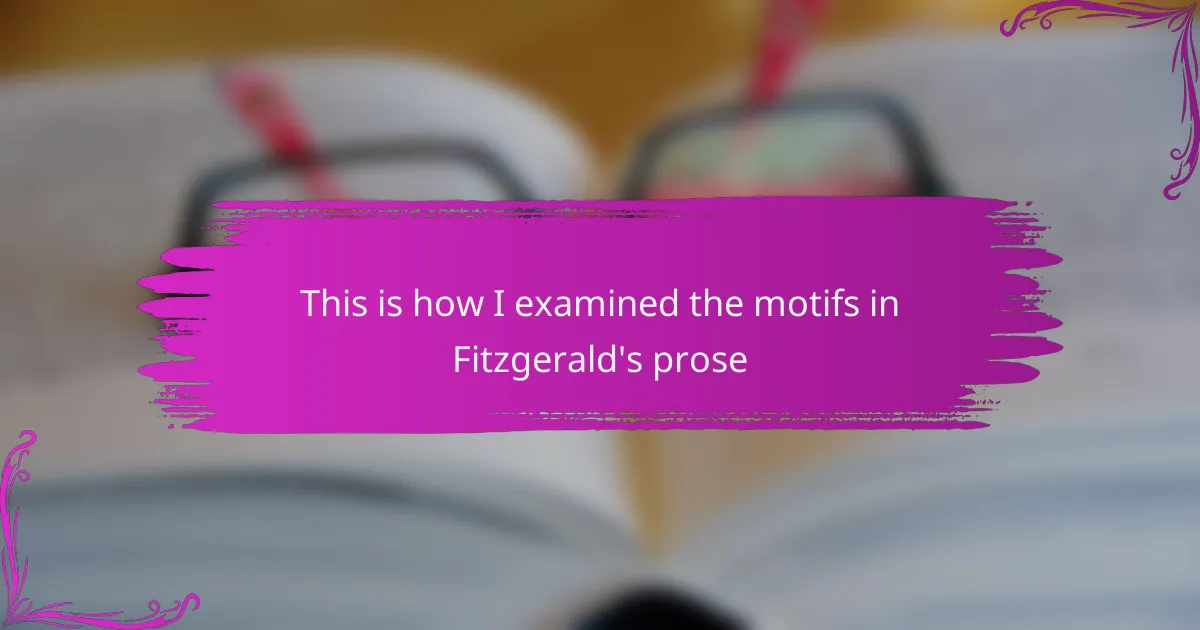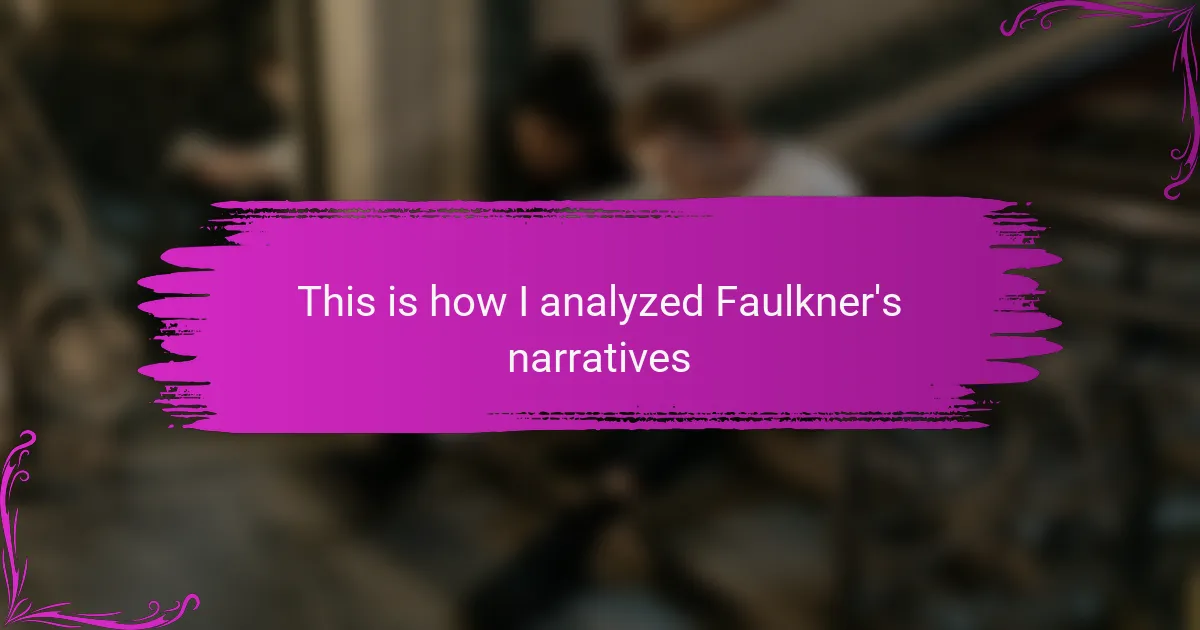Key takeaways
- Hemingway’s writing is characterized by simple, concise sentences that reveal complex emotions, employing the “Iceberg Theory” to suggest deeper meanings beneath the surface.
- Dialogue in Hemingway’s works serves to develop characters and enhance tension, creating an authentic feel in his storytelling.
- Literary analysis enriches understanding of themes, fosters emotional connections to texts, and cultivates critical thinking skills.
- Practical exercises such as writing prompts can help writers emulate Hemingway’s style, focusing on clarity, vivid imagery, and natural dialogue.
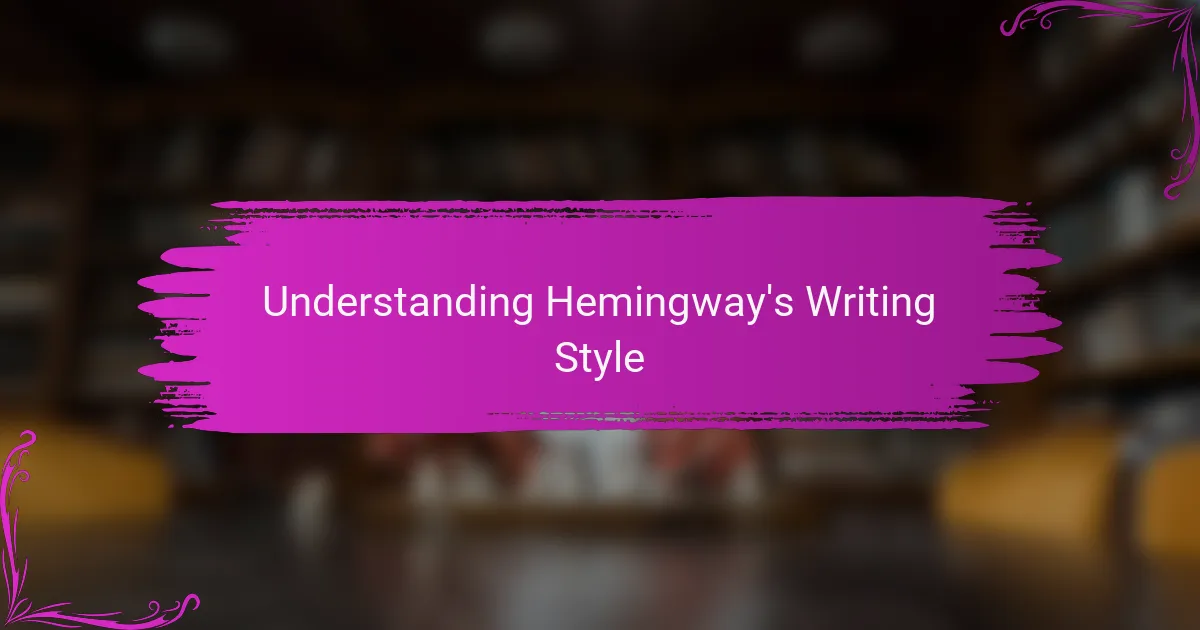
Understanding Hemingway’s Writing Style
When I first delved into Hemingway’s writing style, I was struck by his use of simple, evocative language paired with powerful imagery. This minimalist approach often leaves layers of meaning beneath the surface, a tactic that genuinely captivated me. His sentences are lean, yet every word feels calculated and precise, which encourages readers to fill in the emotional gaps with their interpretations.
One aspect of Hemingway’s style that stands out is his use of the “Iceberg Theory.” This principle suggests that the deeper themes often lie beneath the surface of the text, much like the vast majority of an iceberg hidden underwater. I discovered this firsthand while analyzing “The Old Man and the Sea,” where the struggle between Santiago and the marlin reflects broader themes of resilience and the human condition.
- Hemingway’s hallmark is concise sentences that convey complex emotions.
- He employs dialogue as a tool for revealing character and tension.
- The “Iceberg Theory” invites readers to explore underlying meanings.
- Real-life experiences often influence his fictional landscapes, fostering authenticity.
- His blunt, matter-of-fact tone can evoke a strong emotional response, leaving a lasting impact on the reader.
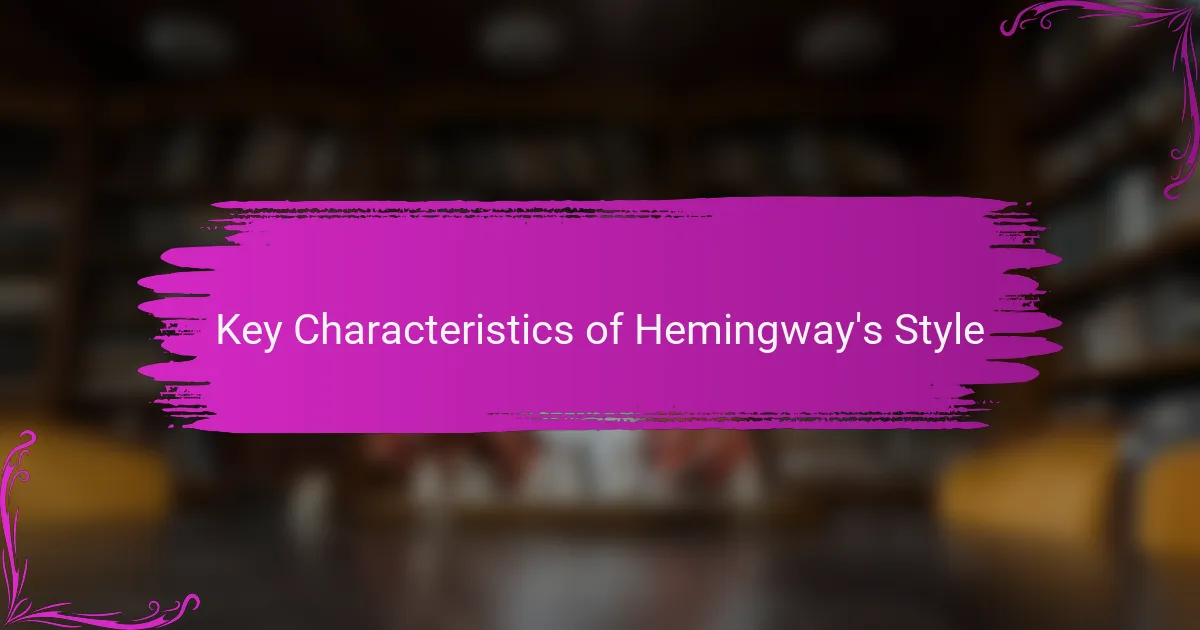
Key Characteristics of Hemingway’s Style
Hemingway’s hallmark is undoubtedly his concise sentences, which manage to convey complex emotions with remarkable clarity. When I read works like “A Farewell to Arms,” I found myself feeling deeply connected to the characters, even though the prose was spare. It’s fascinating how such brevity can elicit such profound emotions; doesn’t it make you wonder what else might be left unsaid in our own conversations?
Another striking feature of his style is the way he uses dialogue to reveal character and tension. I remember getting lost in the exchanges between characters in “The Sun Also Rises.” Each line feels authentic, almost like eavesdropping on real conversations. This approach not only develops the characters but also draws readers deeper into their conflicts. Have you ever felt as though you can hear the characters speaking off the page?
Then, there’s Hemingway’s blunt, matter-of-fact tone. This directness sometimes took me by surprise, especially when it seemed to reflect his own life experiences. For instance, reading about war in “For Whom the Bell Tolls” felt starkly realistic, as if he was inviting me to confront the harsh truths rather than sugarcoat them. I often think about how such an unflinching perspective can leave a lasting impact; isn’t it relatable to face life’s complexities with honesty?

Importance of Literary Analysis
Literary analysis allows readers to delve beneath the surface of a text, uncovering layers of meaning that might not be immediately visible. When I first analyzed Hemingway’s writing, I discovered how his sparse prose and straightforward dialogue carried immense emotional weight. It made me appreciate not just the story, but the underlying themes of courage, loss, and human connection.
Engaging with literary analysis cultivates critical thinking skills and encourages a deeper connection with literature. I remember vividly dissecting “The Old Man and the Sea” in a workshop, where we explored symbolism and character development together, which transformed my perception of the text. That experience opened my eyes to how closely reading can evoke personal reflections on resilience and the human spirit.
- Enhances comprehension of complex themes and ideas in literature.
- Fosters a greater appreciation for authors’ choices in style and structure.
- Encourages personal connection to texts through emotional engagement.
- Develops critical thinking and analytical skills applicable beyond literature.
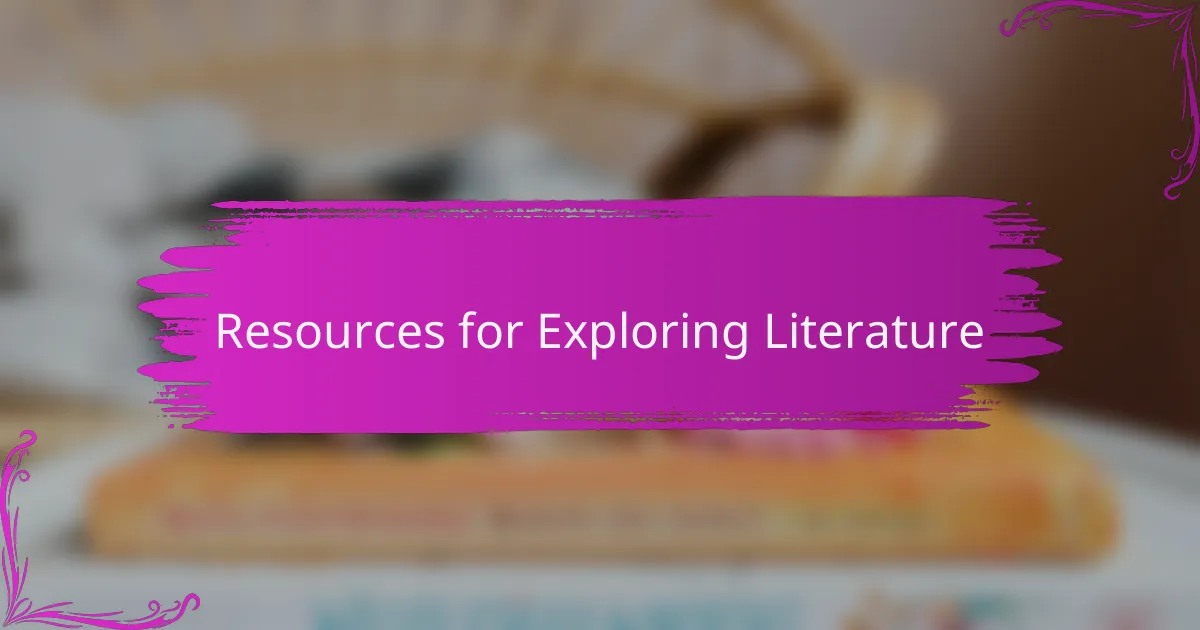
Resources for Exploring Literature
Exploring literature can be an incredibly enriching journey. I’ve often found that having the right resources can transform the way we engage with texts. For instance, reading analytical essays or studying critical interpretations of Hemingway’s works can open up unique perspectives that I never considered before.
I remember a particular moment when I stumbled upon a collection of interviews with writers influenced by Hemingway. It felt like a treasure trove of insights, revealing how deeply his concise style and themes resonated across generations. These kinds of resources can make the exploration process feel not just educational, but personal and relatable.
Here’s a simple comparison table of different resources that I’ve found particularly valuable for diving into literary styles, including Hemingway’s:
| Resource Type | Description |
|---|---|
| Essays | Analytical pieces that dissect Hemingway’s writing style and themes. |
| Interviews | Conversations with authors about Hemingway’s influence on their work. |
| Workshops | Interactive gatherings focusing on understanding and emulating Hemingway’s techniques. |
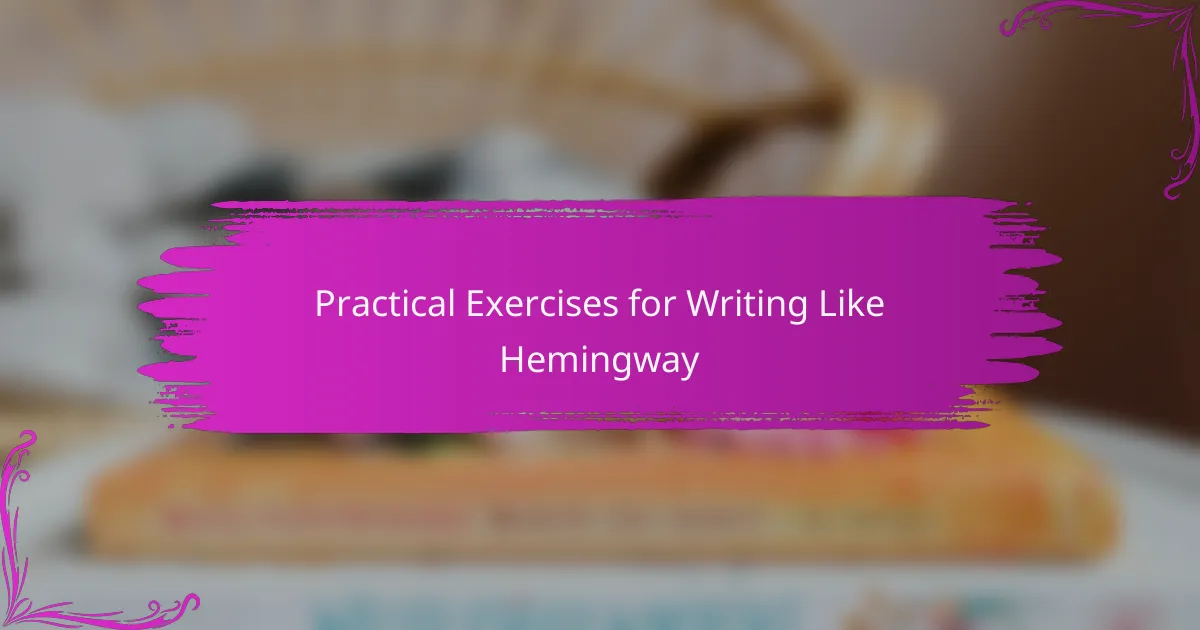
Practical Exercises for Writing Like Hemingway
To truly capture Hemingway’s distinctive style, I found that practical exercises really help. One of my favorites is the writing prompt where you describe a mundane object in simple, straightforward terms. This exercise emphasizes clarity and precision—two hallmarks of Hemingway’s work. Another powerful exercise is to take a complex sentence from your writing and break it down into smaller, clearer parts, mimicking Hemingway’s iceberg theory, where the depth of the story lies beneath the surface.
Here’s a comparison table that outlines key elements of Hemingway’s style and how you can emulate them in your writing practice:
| Hemingway’s Style | How to Apply |
|---|---|
| Short, Simple Sentences | Practice writing each paragraph with no more than 2-3 sentences. |
| Vivid Imagery | Use strong nouns and verbs, and avoid excessive adjectives to paint a clear picture. |
| Dialogue | Write a scene using natural dialogue to reveal character traits and emotions. |
| Showing vs. Telling | Describe actions and behaviors instead of stating emotions outright. |
By engaging in these exercises, I not only improved my writing but also developed a deeper appreciation for Hemingway’s craft. Each practice session felt like peeling back layers, unveiling the intricacies of storytelling while staying true to a clean, impactful style.

Personal Insights from My Experience
Exploring Hemingway’s writing style has been a transformative journey for me. I remember picking up “The Old Man and the Sea” and being struck by his concise, straightforward prose. It felt like each word carried weight, evoking emotions without excessive embellishment.
In my own writing, I’ve attempted to emulate his iceberg theory—the idea that a story is more profound below the surface than what is written. This has challenged me to cut out unnecessary words and focus on conveying the essence of my thoughts, much like Hemingway did. Each time I succeed, I feel a sense of achievement that reminds me of the power of simplicity.
Here’s a comparison of key elements of Hemingway’s style versus more elaborate writing styles that I’ve noticed during my exploration:
| Element | Hemingway’s Style | Elaborate Style |
|---|---|---|
| Word Choice | Simple and direct | Flowery and complex |
| Sentence Structure | Short and punchy | Long and winding |
| Emotional Impact | Subtlety and suggestion | Overt and explicit |
| Theme Presentation | Implied through action | Stated directly |
